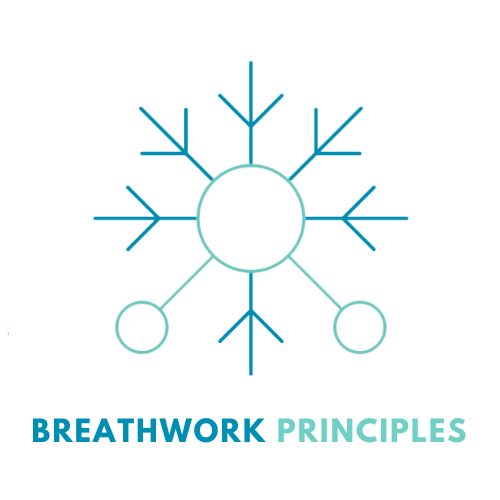Should I Breathe Through My Nose or My Mouth? And Should I Expand My Belly or Chest?
These might seem like basic questions but most people breathe on autopilot without ever questioning how they’re doing it.
And why should they?
Well, for good reason because it turns out that how you breathe matters more than most realise.
Let’s break it down.
Nose vs. Mouth: What’s the Right Way to Breathe?
✅ The short answer: Nose.
The nose has 30+ functions and benefits that help to facilitate healthy, clean and efficient breathing.
The mouth has exactly zero.
Here’re four major functions that explain why nose breathing wins:
Filtration and Humidification
Your nose filters out dust, allergens, and microbes. It also warms and humidifies the air. Mouth breathing skips all that, which can dry out your airways and irritate the lungs; particularly harmful for people with respiratory related illness’ such as asthma.
Ref: Niinimaa et al., 1980; Proctor, 1982Nitric Oxide Production
Breathing through your nose helps to cultivate nasal nitric oxide which is a gas your body makes that helps open airways, improve oxygen uptake, and aids the immune system by killing pathogens; helping to maintain top-tier health year long.
Ref: Lundberg et al., 1995Better Oxygen Delivery
Nose breathing encourages slower, deeper breaths which improve gas exchange. Mouth breathing is often shallow and fast, leading to less oxygen to your cells, not more.
Ref: Courtney, 2009Facial Development (particularly in kids)
Chronic mouth breathing can lead to crooked teeth, narrow palates, and poor facial structure; not a good look!!
Ref: Harari et al., 2010
The exception?
High-intensity output (e.g. sprinting) sometimes demands more air than the nose can handle alone. But for day-to-day living, training, and sleeping — nose wins, hands down.
Belly vs. Chest: Where Should the Breath Go?
✅ The short answer: Belly but it’s a bit more complex …
… and only half true because although “belly breathing” is the popular shorthand. You’re not actually filling your belly with air (the lungs don’t go that low). But when you breathe diaphragmatically, the belly expands because your diaphragm moves down and pushes your organs downward thus your belly naturally expands.
Diaphragm contracts on the inhale pulling the lungs downward and relaxes on the exhale
Why this matters:
More Efficient Oxygen Intake
Diaphragmatic (“belly”) breathing draws air deeper into the lungs, where blood flow is higher. This improves oxygen uptake.
Ref: Hodges et al., 2001Reduces Stress
High “chest” breathing is linked to the stress response whereas low “belly” breathing promotes calm and relaxation.
Ref: Perciavalle et al., 2017Supports Core Stability
Proper use of the diaphragm helps coordinate your breathing with core stability muscles. That matters whether you’re lifting weights or sitting at a desk. Experiencing chronic lower back and/or pelvic pain? It could be worth looking into how you breathe.
Ref: Kolar et al., 2010
Signs you're chest breathing:
Shoulders rise when you inhale
Breath is shallow and fast
You feel tightness in the upper chest
So... What's the Ideal Breath Look Like?
Simple:
In through the nose
Out through the nose
Expand low (belly, not chest)
Slow and steady
Silent
Final Thoughts
Breathing should be effortless — but not careless.
Mouth breathing and chest breathing are often signs of stress, dysfunction, or poor habits. They’re not “bad” per se, but they’re less effective. Training yourself to breathe through your nose and engage your diaphragm is a low-effort, high-impact change that improves health, focus, and performance.
It’s foundational. Get it right early.
References (all available on PubMed or scholarly databases)
Niinimaa V, Cole P, Mintz S, Shephard RJ. The switching point from nasal to oronasal breathing. Am Rev Respir Dis. 1980.
Proctor DF. The upper airway: design for breathing. Respiration Physiology. 1982.
Lundberg JO, Weitzberg E, et al. Inhalation of nasal nitric oxide increases oxygen uptake in the lungs. Acta Physiol Scand. 1995.
Harari D, Redlich M, et al. The effect of mouth breathing versus nasal breathing on dentofacial and craniofacial development in orthodontic patients. Laryngoscope. 2010.
Courtney R. The functions of breathing and its dysfunctions and their relationship to breathing therapy. Int J Osteopath Med. 2009.
Hodges PW, Gandevia SC. Changes in intra-abdominal pressure during postural and respiratory activation of the human diaphragm. J Appl Physiol. 2001.
Perciavalle V, et al. Deep breathing improves stress scores, anxiety, and depression in university students. Neurophysiol Clin. 2017.
Kolar P, et al. Postural function of the diaphragm in persons with and without chronic low back pain. J Orthop Sports Phys Ther. 2010.

